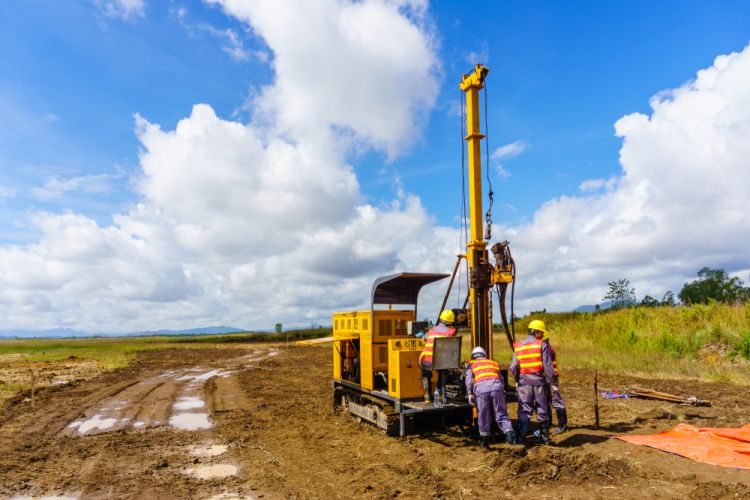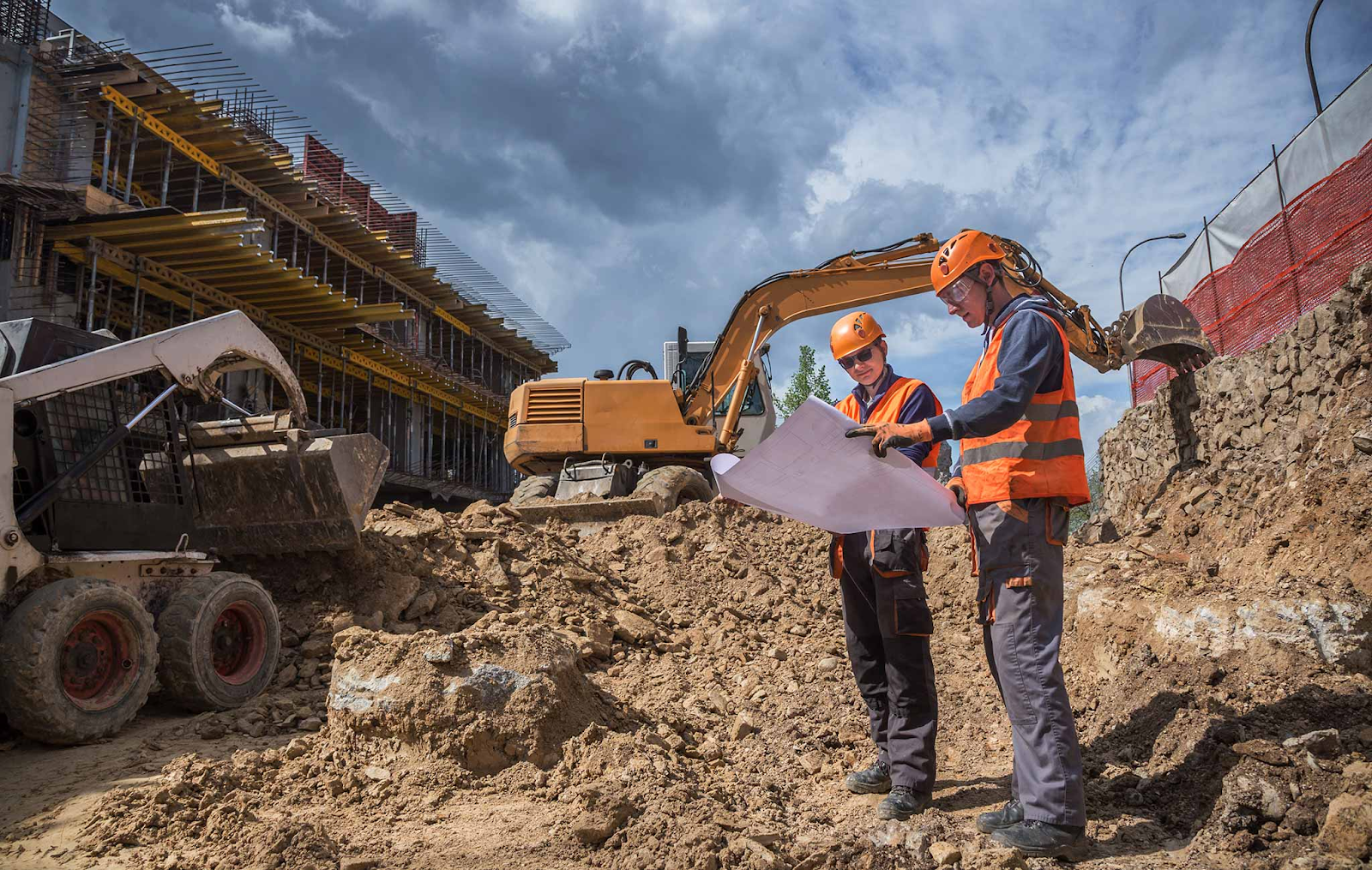The Best Strategy To Use For Specialized Geotechnical Engineering Solutions
The Best Strategy To Use For Specialized Geotechnical Engineering Solutions
Blog Article
Things about Specialized Geotechnical Engineering Solutions
Table of ContentsThe Best Guide To Specialized Geotechnical Engineering SolutionsThe Best Strategy To Use For Specialized Geotechnical Engineering SolutionsSpecialized Geotechnical Engineering Solutions Things To Know Before You BuyLittle Known Facts About Specialized Geotechnical Engineering Solutions.The Greatest Guide To Specialized Geotechnical Engineering SolutionsSome Known Facts About Specialized Geotechnical Engineering Solutions.
William Rankine, a designer and physicist, established an alternative to Coulomb's planet pressure concept. Albert Atterberg established the clay uniformity indices that are still made use of today for soil classification. In 1885, Osborne Reynolds identified that shearing causes volumetric extension of dense products and contraction of loosened granular materials. Modern geotechnical engineering is stated to have started in 1925 with the magazine of Erdbaumechanik by Karl von Terzaghi, a mechanical engineer and rock hound. Terzaghi also developed the framework for theories of birthing capability of foundations, and the theory for prediction of the price of negotiation of clay layers as a result of debt consolidation. After that, Maurice Biot fully established the three-dimensional soil consolidation concept, extending the one-dimensional version previously created by Terzaghi to much more general hypotheses and presenting the collection of basic formulas of Poroelasticity.
Geotechnical engineers explore and identify the residential properties of subsurface conditions and materials. They also create matching earthworks and keeping structures, passages, and framework foundations, and may oversee and assess websites, which might even more include website monitoring along with the risk assessment and reduction of all-natural threats. Geotechnical engineers and design rock hounds execute geotechnical examinations to get details on the physical residential or commercial properties of soil and rock underlying and beside a site to design earthworks and foundations for suggested structures and for the repair work of distress to earthworks and frameworks triggered by subsurface problems.
Specialized Geotechnical Engineering Solutions Can Be Fun For Everyone
Geologic mapping and interpretation of geomorphology are usually completed in examination with a rock hound or design rock hound. Subsurface expedition generally involves in-situ testing (for instance, the basic penetration test and cone penetration test). The digging of test pits and trenching (especially for finding mistakes and slide aircrafts) might additionally be made use of to find out about dirt problems at depth. Still, they are in some cases utilized to enable a rock hound or engineer to be reduced into the borehole for direct visual and hand-operated evaluation of the dirt and rock stratigraphy. Numerous dirt samplers exist to satisfy the requirements of various engineering tasks. The standard infiltration examination, which utilizes a thick-walled split spoon sampler, is one of the most common method to gather disrupted examples.

Generally, the interface's precise geometry is unidentified, and a simplified interface geometry is assumed. Finite inclines call for three-dimensional models to be evaluated, so most slopes are examined thinking that they are considerably wide and can be represented by two-dimensional versions.
Specialized Geotechnical Engineering Solutions - Questions

Dimension of quantities and evaluation of real conditions. Layout adjustment per actual problems The observational technique appropriates for building and construction that has already begun when an unforeseen development takes place or when a failing or accident looms or has actually already taken place. It is inappropriate for tasks whose style can not be modified during building and construction.
Principles of Geotechnical Engineering. Thomson Understanding. Budhu, Muni (2007 ). Soil Auto Mechanics and Structures. John Wiley & Sons, Inc. . ISBN 978-0-471-43117-6. Disturbed soil residential properties and geotechnical design, Schofield, Andrew N., Thomas Telford, 2006. Guerriero V., Mazzoli S. (2021 Resources ). "Theory of Effective Stress And Anxiety in Soil and Rock and Ramifications for Fracturing Processes: A Testimonial".
Not known Factual Statements About Specialized Geotechnical Engineering Solutions
Principles and Technique of Ground Enhancement. Ground Improvement Concepts And Applications In Asia. Design evaluation in rock mechanics.
Cengage Learning, Stamford, 666 p. Atkinson, J., 2007. The auto mechanics of soils and structures. Taylor & Francis, N.Y., 442 p. Drifting Offshore Wind Wind Turbines: Responses in a Sea state Pareto Ideal Designs and Financial Assessment, P. Sclavounos et al., October 2007. Nicholson, D, Tse, C and Dime, C. (1999 ). The Observational Approach in ground design concepts and look at these guys applications.
Specialized Geotechnical Engineering Solutions Can Be Fun For Everyone
These reports are tailored to meet the certain demands of a project and include style criteria and recommendations for the construction of a variety of synthetic frameworks. As providing consultancy solutions covering locations such as incline stability and load-bearing abilities for various products, these designers embark on research study and advancement activities to boost techniques, tools, products knowledge and analysis covering whole lifecycles.
Design the homes and mechanics of rocks including the application of characteristics, liquid mechanics, kinematics and material technicians. This brings with each other geology, soil and rock technicians, and architectural engineering for the design and building and construction of structures for a variety of civil engineering tasks. This field involves anticipating the performance of structure soil and rock to a load enforced by a structure, while considering efficiency, economic climate and safety and security.
Nonetheless, rates of pay generally increase as your expertise and skills grow, with standards pointing to a graduate beginning salary of in between 18,000 and 28,000 per year in the UK. This climbs to 26,000 to 36,000 with a couple of years of experience and then getting to 40,000 to 60,000+ for senior, chartered or useful source master designers.
6 Easy Facts About Specialized Geotechnical Engineering Solutions Explained
Nevertheless, with the appropriate application it is feasible to master the career and gain entry to a difficult yet fulfilling and important profession. A geologist would need to retrain to become a geotechnical engineer, although there is a lot of cross-over between both professions, which could make this easier. Rock hounds need to have an understanding of soils, rocks and other products from a clinical viewpoint, while geotechnical designers tale their understanding of matters such as soil and rock mechanic, geophysics and hydrology and use them to design and ecological jobs.
When starting, these engineers will certainly often tend to deal with less complex projects, building up expertise and experience all set for even more difficult work later on. Geotechnical designers have a tendency to specialise in specific locations as they expand in experience, concentrating on certain infrastructures such as railways, roadways or water. These designers additionally collaborate with eco-friendly power, offshore and onshore oil and gas, nuclear power, and a lot more.
Report this page